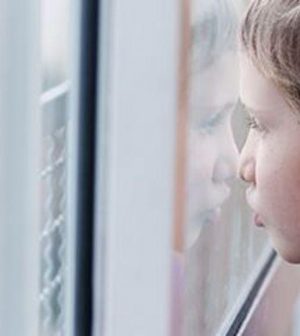- Navigating Your Midlife Crisis: Embracing New Possibilities
- City Raccoons Showing Signs of Domestication
- Mapping the Exposome: Science Broadens Focus to Environmental Disease Triggers
- One Week Less on Social Media Linked to Better Mental Health
- Your Brain Changes in Stages as You Age, Study Finds
- Some Suicide Victims Show No Typical Warning Signs, Study Finds
- ByHeart Formula Faces Lawsuits After Babies Sickened With Botulism
- Switch to Vegan Diet Could Cut Your Greenhouse Gas Emissions in Half
- Regular Bedtime Does Wonders for Blood Pressure
- Dining Alone Could Mean Worse Nutrition for Seniors
Simple Eye Test Might Spot Autism in Kids

The eyes may have it when it comes to the early diagnosis of autism in children, a new study finds.
Researchers at the University of California, San Francisco (UCSF), have pinpointed a gene that affects how kids’ eyes react when they turn their heads.
Typically, people use what’s called the vestibulo-ocular reflex to help their sight coordinate with their head movement.
However, kids with autism appear to have a gene that puts this reflex into overdrive, and the change can be picked up on vision tests.
That might help speed research into autism, said study co-author Kevin Bender, a professor in the UCSF Weill Institute for Neurosciences.
“We can measure it in kids with autism who are non-verbal or can’t or don’t want to follow instructions,” Bender said in a university news release. “This could be a game-changer in both the clinic and the lab.”
The significance of the variant in the eye-tracking gene, called SCN2A, was first spotted in mice.
If you shake your head, your eyes still stay more or less “centered,” the researchers explained. But in mice with a particular form of the SCN2A gene, that wasn’t the case. Their vestibulo-ocular reflex got stuck.
Would this aberration show up in children with autism?
To find out, Bender’s group conducted a study involving 5 kids with autism and 11 of their siblings who did not have the condition.
The kids were placed in an office chair and then rotated while a camera mounted on a helmet tracked their vestibulo-ocular reflex.
The UCSF group saw clear differences in the reflex response, depending on whether or not the kids had autism.
In another experiment, Bender’s team “fixed” the faulty reflex gene in young mice by using CRISPR gene-editing technology. That seemed to return the mice’s vestibulo-ocular reflex to normal.
The study was published Feb. 26 in the journal Neuron.
“These first results, using this reflex as our proxy for autism, point to an early window for future therapies that get the developing brain back on track,” said study first author Chenyu Wang, a UCSF graduate student in Bender’s lab.
The jury is still out on whether CRISPR gene correction might work in humans, the authors stressed. But the eye test could help with the early diagnosis of severe autism.
“If this sort of assessment works in our hands, with kids with profound, nonverbal autism, there really is hope it could be more widely adopted,” Bender said.
More information
The U.S, Centers for Disease Control and Prevention has more on autism screening.
SOURCE: University of California, San Francisco, news release, Feb. 27, 2024
Source: HealthDay
Copyright © 2025 HealthDay. All rights reserved.










